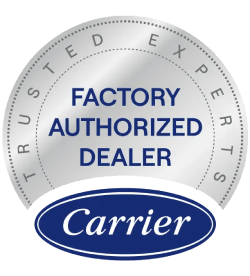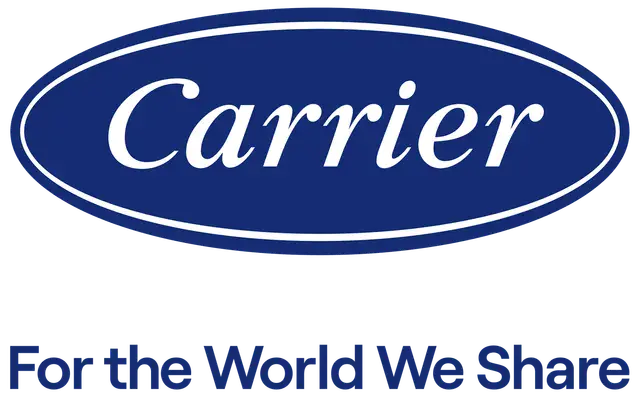Understanding VRF Systems and Their Growing Importance
Variable Refrigerant Flow systems represent one of the most sophisticated HVAC technologies available for commercial, industrial, and residential applications throughout Birmingham, Mountain Brook, Vestavia, Hoover, Helena, and Homewood. At Stegall, we specialize in the installation, maintenance, and repair of these advanced climate control systems that have revolutionized how buildings manage heating and cooling demands. VRF technology uses refrigerant as both the cooling and heating medium, allowing for precise temperature control across multiple zones while maintaining exceptional energy efficiency. Unlike traditional HVAC systems that operate on simple on-off cycles, VRF systems modulate the flow of refrigerant to individual indoor units based on real-time demand, resulting in energy savings that typically range from 20 to 40 percent compared to conventional systems.
The fundamental principle behind VRF technology involves a single outdoor condensing unit connected to multiple indoor evaporator units through refrigerant piping networks. Each indoor unit can be individually controlled, allowing different areas of a building to maintain different temperatures simultaneously. This zoning capability makes VRF systems particularly valuable for buildings with varying occupancy patterns, diverse thermal loads, or specific comfort requirements across different spaces. Our technicians at Stegall have extensive experience designing and implementing VRF solutions that maximize these benefits while ensuring reliable operation year-round.
Technical Components and System Architecture
The heart of any VRF system consists of an inverter-driven compressor that adjusts its speed based on the combined cooling or heating demands from all connected indoor units. This variable-speed operation eliminates the energy waste associated with constant cycling and provides more stable temperature control. The outdoor unit contains sophisticated control electronics that monitor system pressures, temperatures, and refrigerant flow rates, making thousands of adjustments per day to optimize performance. Modern VRF systems incorporate advanced refrigerants like R-410A or newer low-GWP alternatives that provide excellent heat transfer properties while minimizing environmental impact.
Indoor units in VRF systems come in various configurations including wall-mounted, ceiling cassette, ducted, and floor-standing models, each designed for specific installation requirements and aesthetic preferences. These units contain electronic expansion valves that precisely meter refrigerant flow based on the temperature differential between the setpoint and actual room temperature. The refrigerant piping network uses a two-pipe or three-pipe configuration, with the latter enabling simultaneous heating and cooling in different zones. Branch selector boxes, also known as refnet joints, distribute refrigerant from the main lines to individual indoor units while maintaining proper pressure and flow characteristics throughout the system.
Installation Considerations and Best Practices
Proper installation of VRF systems requires careful planning and execution to ensure optimal performance and longevity. We begin every project with a comprehensive load calculation that considers factors such as building orientation, insulation levels, window specifications, occupancy patterns, and internal heat gains from equipment and lighting. This analysis determines the appropriate system capacity and the number and placement of indoor units needed to maintain comfort throughout the space. Refrigerant piping design must account for maximum allowable pipe lengths, vertical separation between units, and proper pipe sizing to maintain adequate refrigerant velocity and oil return.
During installation, our certified technicians pay special attention to brazing quality, pressure testing, and vacuum procedures to ensure a leak-free system. Proper insulation of refrigerant lines prevents condensation and energy loss while maintaining system efficiency. The control wiring network must be installed according to manufacturer specifications, with appropriate shielding and separation from power wiring to prevent electromagnetic interference. Commissioning procedures include refrigerant charging based on actual pipe lengths, system addressing for proper communication between components, and performance verification across all operating modes.
Advantages for Different Building Types
- Office Buildings: Individual zone control allows personalized comfort for different departments while reducing energy consumption in unoccupied areas
- Hotels: Guest room comfort can be maintained independently while common areas operate on different schedules and temperature requirements
- Healthcare Facilities: Precise temperature control supports patient comfort and regulatory compliance for sensitive areas like operating rooms and laboratories
- Educational Institutions: Classrooms can be conditioned based on occupancy schedules while maintaining different conditions for gymnasiums, cafeterias, and administrative areas
- Retail Spaces: Flexible zoning accommodates changing floor layouts and varying heat loads from lighting and customer traffic
Maintenance Requirements and Service Support
Regular maintenance ensures VRF systems operate at peak efficiency throughout their service life, which typically exceeds 15 to 20 years with proper care. We provide comprehensive maintenance programs that include quarterly filter cleaning or replacement, coil cleaning to maintain heat transfer efficiency, and refrigerant leak detection using electronic sensors or ultraviolet dye methods. Our technicians check and calibrate temperature sensors, verify proper operation of electronic expansion valves, and inspect electrical connections for signs of wear or overheating. Software updates keep system controllers current with the latest operational algorithms and diagnostic capabilities.
Preventive maintenance also involves monitoring system performance data to identify trends that might indicate developing problems. Modern VRF systems generate detailed operational logs that track compressor run times, refrigerant temperatures and pressures, and fault codes that help diagnose issues before they cause system failures. As part of our commitment to providing commercial, industrial and residential HVAC, plumbing, and electrical support services 24 hours a day, 7 days a week, Stegall maintains an inventory of common VRF components to minimize downtime when repairs are needed.
Energy Efficiency and Cost Considerations
VRF systems deliver exceptional energy efficiency through several mechanisms that reduce operational costs significantly compared to traditional HVAC approaches. The variable-speed compressor operation matches system output to actual demand, eliminating the energy penalties associated with oversized equipment operating at partial loads. Heat recovery VRF systems capture waste heat from zones requiring cooling and redirect it to areas needing heating, achieving coefficients of performance exceeding 4.0 in simultaneous heating and cooling modes. Advanced control algorithms optimize refrigerant temperatures based on ambient conditions and system load, further improving efficiency during partial-load operation that represents the majority of operating hours.
Initial investment costs for VRF systems typically exceed those of conventional HVAC equipment, but the total cost of ownership often favors VRF technology when considering energy savings, reduced maintenance requirements, and longer equipment life. Utility rebate programs in Alabama frequently provide incentives for installing high-efficiency VRF systems, helping offset upfront costs. The modular nature of VRF systems also allows for phased installations and future expansion without replacing the entire system, providing flexibility for growing businesses or changing building uses. When evaluating VRF systems for your facility, we provide detailed economic analyses that consider installation costs, projected energy savings, maintenance expenses, and available incentives to help make informed decisions about your HVAC investment.


